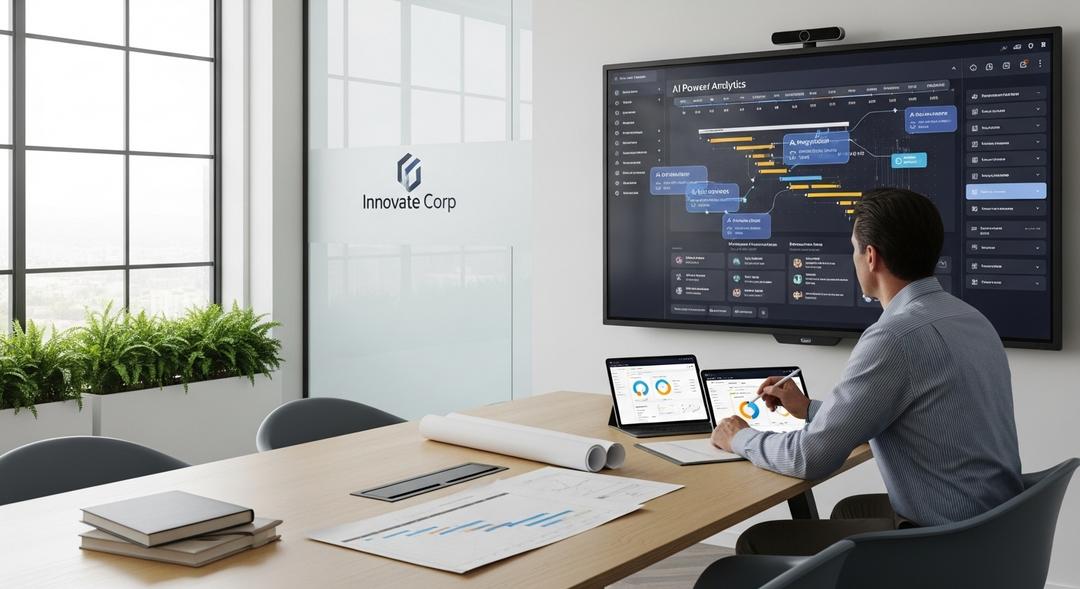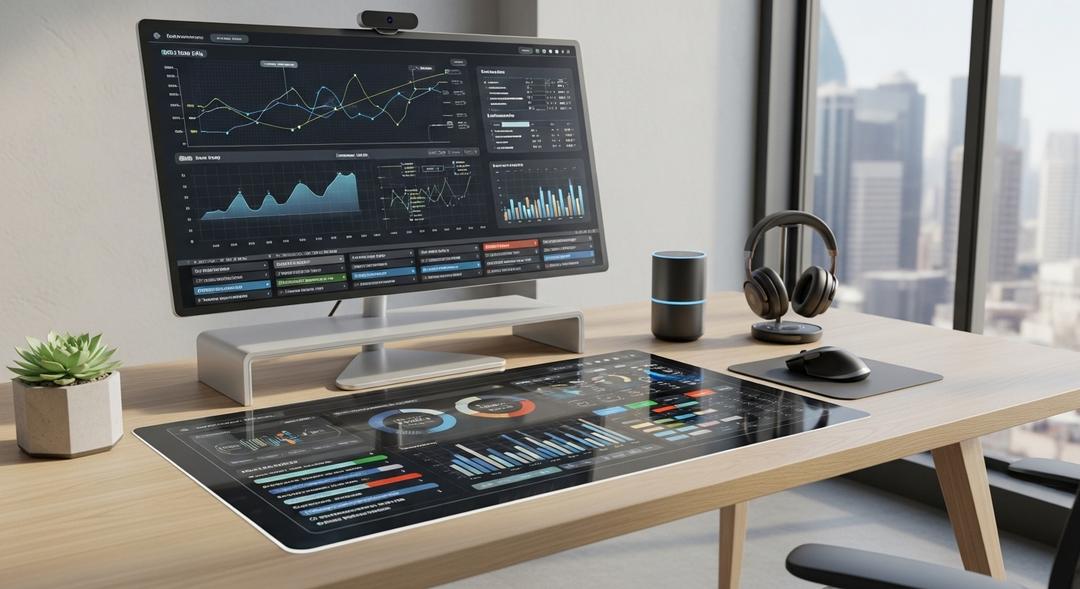AI tools for project management have transformed how modern businesses operate, providing smart ways to improve team collaboration and simplify task management. These innovative solutions can automate routine work, create greater workflow efficiency, and help businesses reach their project goals faster.
With these advancements, companies experience more transparency across projects and better control over deadlines. By choosing the right technology, teams can achieve robust productivity and stronger results.
Selecting the most effective software means considering your team’s processes and what each platform can deliver. Below is a comparison of standout options, highlighting their main benefits and what to consider before adopting them.
What are the benefits for using AI tools for project management
Businesses and teams are increasingly adopting project management productivity tools to enhance output and minimize inefficiencies. These software solutions can automate everyday duties and provide actionable insights to support each phase of project delivery.
- Automating repetitive jobs lessens the burden of manual work and increases accuracy across task management
- Instant access to analytics helps teams spot potential issues for faster problem-solving
- Collaboration functions promote seamless communication within both local and remote teams
1. Teamwork
Features
- Automation of tasks and tracking dependencies
- Built-in time tracking to manage resources
- Personalized dashboards that give project insights
- Comprehensive reports to review performance
Pros
- Simple interface works for teams of any size
- Streamlined workload and resource management
- Connects with many popular business apps
- Advanced permissions to keep data protected
Cons
- Initial learning curve for beginners
- Some complex features only found in higher-priced plans
- Reporting customization is somewhat limited
Pricing: Teamwork gives access to a free package for basic needs, with pro features in paid monthly plans.
2. Wrike
Features
- Workflows are fully adjustable, supporting process automation
- Gantt chart tools for visual project timelines
- Rich analytics and dynamic reporting
- File and asset sharing within projects
Pros
- Adapts easily to different project types and team sizes
- Templates for various industries
- Wide scalability for growing organizations
Cons
- May slow down with oversized projects
- Mobile version can experience sync lag
- Setup requires some time investment
Pricing: Wrike’s free option covers basics, while professional features are on offer in the subscription packages.
3. Asana
Features
- Easy-to-use lists and timeline views for tasks
- Milestone and goal tracking capabilities
- Workflow automation for recurring tasks
- Team update tools for fast communication
Pros
- Simple onboarding and intuitive navigation
- Organizes straightforward and complex projects effectively
- Numerous integrations with top productivity software
- Comprehensive support materials
Cons
- Tasks can only be assigned to one user by default
- Data reporting features could be stronger
- Offline features are basic
Pricing: Asana gives free access for essential features, with higher-level options through paid plans.
4. Monday.com
Features
- Visually rich project boards with templates you can customize
- Workflow automation for repeated processes
- All-in-one dashboards for project overview
- Multiple project views including Kanban and Gantt
Pros
- Highly visual user interface for ease of use
- Ideal for expanding to accommodate large teams
- Great customization for process management
- Extensive integration ecosystem
Cons
- Overwhelming for those new to project software
- Premium features only in advanced tiers
Pricing: Monday.com’s entry plan is free, with flexible payment structures for additional needs.
5. ClickUp
Features
- Unified workspace including tasks, documents, and goals
- Automated process flows for efficiency
- Custom dashboards and views for progress monitoring
- Integrated time tracking capabilities
Pros
- Customization supports a broad range of project requirements
- Centralized hub with diverse access options
- Plenty of features embodied in the free tier
- Frequent improvements and updates
Cons
- Busy interface may feel cluttered at first
- Takes time to learn all the available tools
- Sometimes experiences slower performance
Pricing: ClickUp offers a no-cost base plan, with premium features through paid subscriptions.
6. Motion
Features
- Task scheduling automation according to deadlines
- Seamless calendar syncing for live updates
- Automatic alerts and reminders
- Daily agenda summaries
Pros
- Simplifies managing calendars and priorities
- Decreases the need for manual scheduling
- Helps minimize constant switching between tasks
Cons
- Lacks some advanced project management features
- Simple analytics and reporting options
Pricing: Motion comes with a trial for first-time users and then switches to a paid plan.
7. Trello
Features
- Board and card format for organizing tasks visually
- Drag and drop ease-of-use for managing work
- Butler feature to automate basic workflows
- Works with other apps such as Slack and Google Drive
Pros
- Effortless Kanban model for all teams
- Promotes team-driven collaboration
- Adaptable to many different projects
Cons
- Not suitable for highly complex project management
- Limited analytics compared to other options
- Timeline views require premium access
Pricing: Trello provides an entry-level free plan, with expanded features in paid versions.
8. Notion
Features
- Complete workspace for documents, wikis, and project plans
- Custom databases and ready-to-use templates
- Granular sharing and permission controls
- Built-in calendar and list tracking
Pros
- Keeps all content and tasks in one spot
- Adapts to any workflow or use case
- Great for individuals and group use
- Streamlined and easy-to-use interface
Cons
- May take effort to set up full functionality
- Limited capabilities in offline mode
Pricing: Notion’s personal plan is free, with team and professional plans available for a fee.
9. Microsoft Project
Features
- Advanced scheduling tools for comprehensive management
- Resource allocation and financial tracking functions
- Gantt chart views and ready-made report formats
- Connection to the Microsoft 365 suite
Pros
- Delivers powerful performance for complicated projects
- Benefits from Microsoft’s global support system
- Easily tailored for enterprise requirements
Cons
- Intensive to learn, especially for first-timers
- Costs can be high for small organizations
- Needs Microsoft 365 integration for optimal results
Pricing: Microsoft Project is available based on different subscription models to fit any business size.
10. Smartsheet
Features
- Spreadsheet-oriented interface for straightforward task management
- Automated workflows and approval routing
- Visual dashboards to assess project status
- Robust sharing solutions for teams
Pros
- Very familiar for those experienced with spreadsheets
- Automation and collaborative features are a strong point
- Scales up easily as your organization grows
Cons
- Complex setups may take time to train team members
- The UI can seem crowded for those new to project software
Pricing: Smartsheet gives users a chance to try all features with a free trial, with pricing scaling by team size.
Conclusion
Finding the best fit among the many AI project management tools depends on your workflows, how your team is structured, and the type of work you deliver.
With more competition in every field, the right project management platform gives you an edge in both productivity and teamwork. Exploring these leading software options helps make sure you choose a solution that matches your style and drives your organization’s success.








